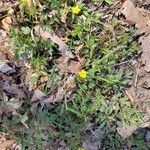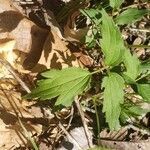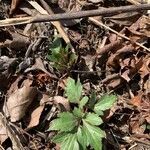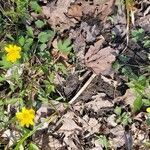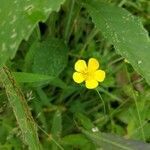Stems erect or decumbent, sometimes rooting nodally, hispid or strigose, base not bulbous. Roots never tuberous. Basal leaf blades ovate to deltate in outline, 3-foliolate or outer blades merely 3-parted, 2-13.4 × 2.4-16.8 cm, leaflets undivided to lobed or parted, ultimate segments narrowly elliptic or oblanceolate to circular, margins toothed, apex acuminate to rounded. Flowers: receptacle hispid; sepals spreading or reflexed, 4-10 × 2-5 mm, hispid; petals 5, yellow, 8-16 × 3-9 mm. Heads of achenes hemispheric to short-ovoid, 6-10 × 7-10 mm; achenes 2.2-5.2 × 2-3.8 mm, glabrous, margin forming narrow rib or broad wing 0.1-1.2 mm wide; beak persistent, lance-subulate, straight or somewhat curved, 0.8-2.6 mm.
